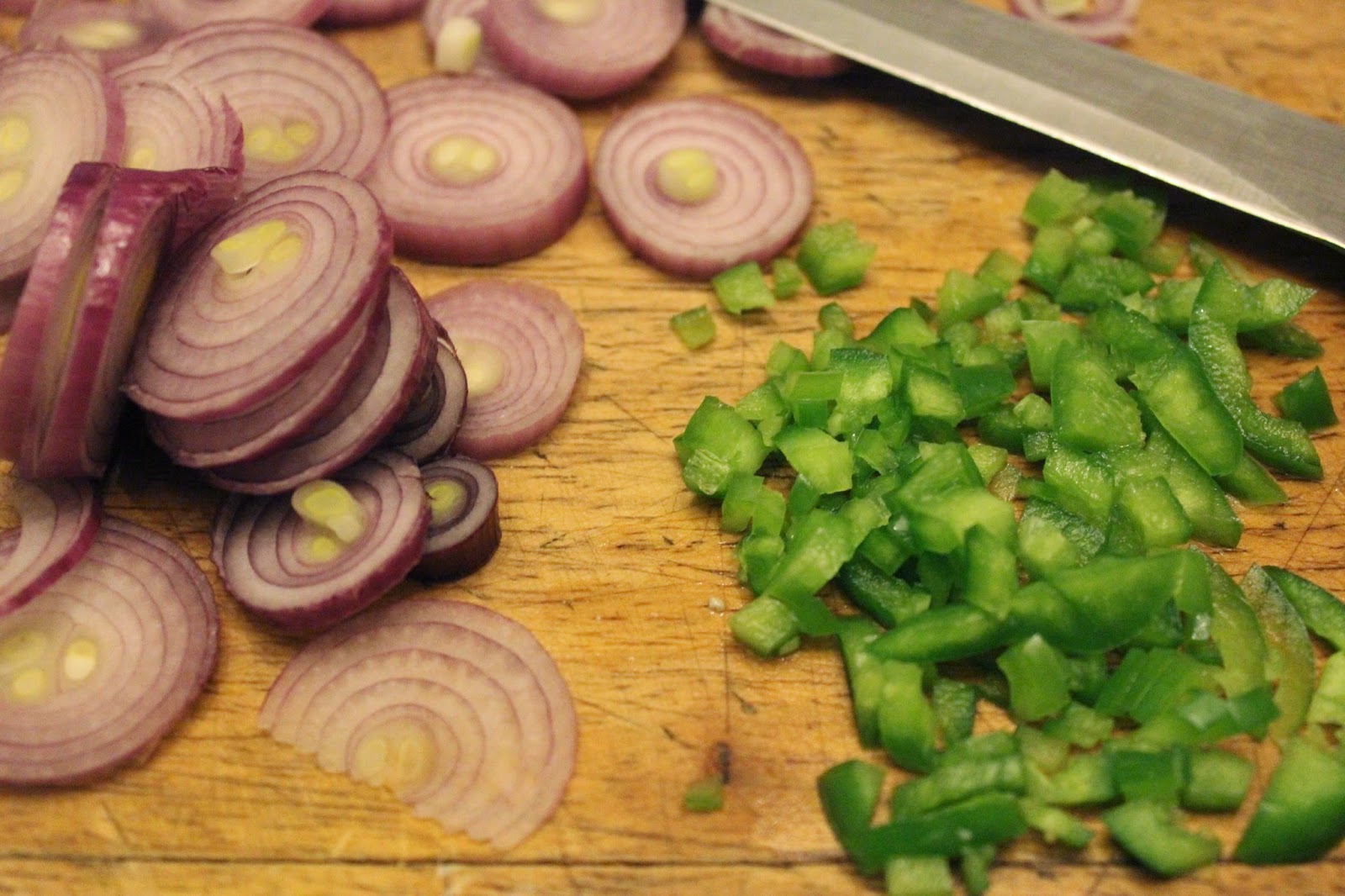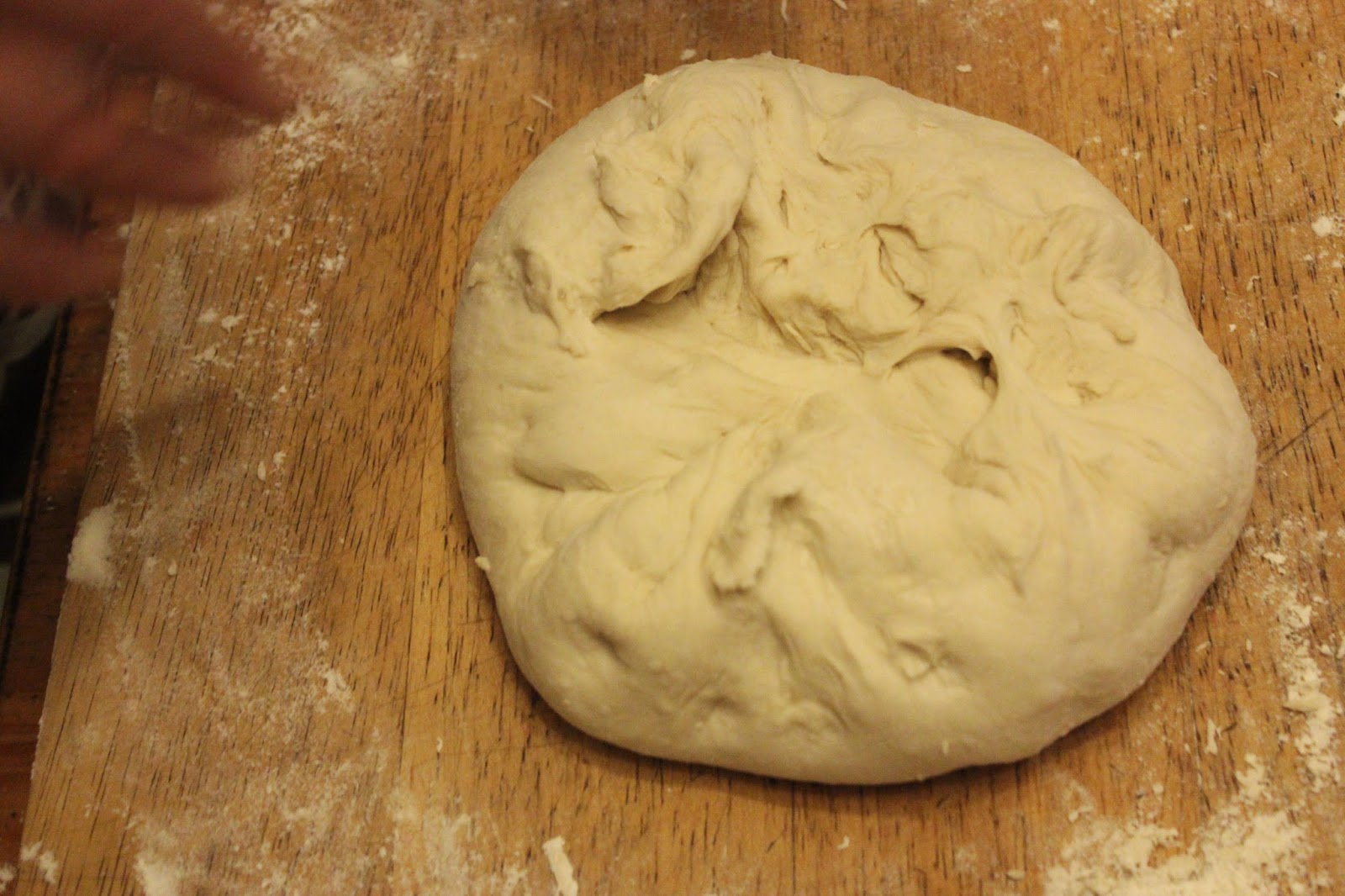Alsace, is perhaps best known for its crisp white wines, beautiful architecture and nesting storks but it also famous for its distinctive and delicious cuisine. The first Tarte flambée we came across, was served hot and straight from the bread oven at an organic dairy farm gathering in Brittany to celebrate the Fête du lait. This latter, which takes place all across France in early June, is a big open-air breakfast and farm festival and if you ever see one advertised - go!
Below is my version of this dish, from our woodcooker, so minus the smoky flambée but plus a little abstract art.
You'll probably appreciate this whimsical idea more in the full tin version. Below is my version of this dish, from our woodcooker, so minus the smoky flambée but plus a little abstract art.
Framed edible art anyone?
The origins of this recipe were supposedly the result of thrifty bakers testing their bread ovens for temperature but my guess is, this was rather a good excuse for a late supper or hearty breakfast! The three names (see post title) used for this dish, sic., Alsation, German and French, embody and celebrate the crossover of cuisine and cultures.
The traditional ingredients for Flammekueche are crème fraîche, lardons aka cured breast of pork or pork belly cut into strips and onions, all arranged onto a thin pizza-type dough base. However, if you don't eat pork, there are many delicious alternatives, such as diced sun or oven-dried tomatoes. Pictured below are some I prepared last year and I'll be sharing how, why and when I make them in the next blog post.
As you will be aware, if you are following my blog, we eat organic meat on a small budget, so I am always working out ways to get the best value from my butcher. In the case of this recipe, it is paradoxically better for me to use my half price heel of ham or my 5 Euro end of Parma, rather than the more expensive lardons. The cost difference is due to labour, as lardons, although from a cheap cut, are usually sold diced and I can do my own slicing! However, depending on what's available, you may be able to buy a piece of cured pork belly directly from the whole joint, so if you want to be a purist, then I would go for this.
From the point of view of the dough, in this recipe we are using a bread making machine. This because Andy, who is chief bread-maker in our family, developed a flour allergy some years ago, quite common with people who always make their own bread. I actually think our home-raised quail eggs (direct link to my organic quail article) he took for hay fever and eczema will have cured this because he can now make scones by hand but we'd rather not tempt fate with constant contact.
Ingredients
For the dough
300g 11oz strong white flour
½ teaspoon of dried yeast (I use Dove's Farm)
1 - 2 tablespoons olive oil
generous pinch of raw sea salt
170ml water
For the topping
Red Onion - One large or two medium
Raw crème fraîche - 1 tablespoon
Ham - I used two kinds this time, strips cut from a heel of jambon blanc and jambon braisé et fumé (a braised and smoked ham). These are both essentially what is left of large whole hams, i.e the pieces that will no longer fit the machine to make suitable slices.
A little green pepper for added colour
Our Tin (just to give you an idea of coverage) 37cm x 27cm or approx 15" x 11"
Cooking Times
15 - 20 minutes or until just crisp in an oven pre-heated to 230°C or 450°F
Method
Add all the dough ingredients to the basin and set the machine to 'pizza'. Follow the order of introducing the ingredients as per the instructions on your machine. In ours they are thus: yeast, flour, salt, oil, water.
Meanwhile prepare the ingredients for the topping. Slicing the pepper and onion into thin rings and/or strips....
....and breaking down some of the ham heel(s) into fine 'lardons'.
When the dough is ready, remove it from the pan and knock it back. This is a process by which CO² is removed from the dough. This is a flat bread so you don't want it to rise too much.
It is then ready to roll out.
Place dough in the buttered tin, I then leave it to prove for a few minutes on the top of a rack on top of the wood cooker. This allows it to relax and will make for a lighter base.
Once you notice it is starting to rise, then it is ready for the topping.
Carefully spread the crème fraîche onto the base, if you are using raw thick farm cream like mine then it can be quite tricky to get an even layer. Just do your best, as once in the oven it will melt across the dough.
Now let your artistic temperament have free range.
For Cookery is a branch of the Arts
Cook until crisp
Serve with a fresh green salad and if you like, a traditional glass of organic beer.
Some Useful Ingredients & Utensils
If you've enjoyed this post then please feel free to share it, ask questions and/or comment.
Some Useful Ingredients & Utensils
If you've enjoyed this post then please feel free to share it, ask questions and/or comment.
Hope to see you here again for another recipe from an old farmhouse in Normandie,
Sue
Return to 'WHAT'S ON THE MENU' for more Simply Organic Recipes
© 2014 Sue Cross

















